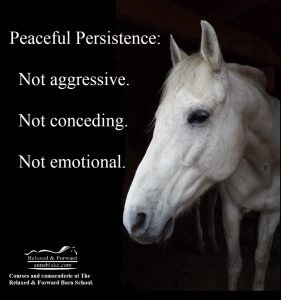The common comparison of horse intelligence to that of a 3-year-old human child often oversimplifies the complex cognitive abilities of horses. While horses might share some developmental milestones with young children, such as mirror self-recognition and basic emotional understanding, equating their intelligence solely on this basis overlooks the nuanced ways horses perceive and interact with the world. This article delves into the question of horse intelligence, challenging common misconceptions and exploring how horses demonstrate intelligence differently than humans.
Rethinking the 3-Year-Old Comparison
The idea that horses have the intelligence of a 3-year-old child stems from observations of certain cognitive skills. Horses can recognize themselves in mirrors, learn simple commands, and exhibit some understanding of human emotions. However, these comparisons are made through a human lens, failing to account for the unique evolutionary pressures and survival needs that have shaped equine intelligence.
In a natural setting, a horse demonstrates skills far surpassing those of a toddler. Their acute senses, herd dynamics, intricate communication systems (including calming signals), and ability to navigate complex environments showcase an intelligence tailored to their specific needs. A horse’s ability to perceive subtle shifts in body language, both human and equine, speaks to a highly developed social intelligence.
 Horses in a field demonstrating social intelligence.
Horses in a field demonstrating social intelligence.
Horse Intelligence: Beyond Human Constructs
We often project human desires and expectations onto horses, viewing them as therapeutic companions, best friends, or emotional supports. However, this anthropomorphic view can hinder a true understanding of their intelligence. Horses are prey animals, driven by instinct and a constant awareness of their surroundings. Their intelligence is geared towards survival within a complex social structure and a potentially dangerous environment.
Expecting horses to fulfill human emotional needs ignores their inherent nature. While horses can form strong bonds with humans, these relationships are based on mutual respect and understanding of each species’ unique communication styles. Demanding that a horse behave like a human companion sets unrealistic expectations and can lead to misunderstandings and frustration.
Measuring Intelligence Across Species
Comparing intelligence across different species is inherently challenging. Each species has evolved specialized cognitive abilities to thrive in its specific ecological niche. Judging animal intelligence solely by human standards is not only arrogant but also scientifically inaccurate.
Instead of focusing on comparative measures, researchers are increasingly exploring the specific types of intelligence that different species possess. Horses, for example, demonstrate exceptional spatial memory, an ability crucial for navigating their environment and remembering the location of resources. They also exhibit advanced social cognition, understanding complex herd hierarchies and communicating effectively through subtle body language.
Studying Horses in Their Natural Habitat
To truly understand horse intelligence, we need to observe them in their natural environment. Removing a horse from its herd for testing introduces stress and anxiety that can skew results. Ethological studies, like those pioneered by Jane Goodall with chimpanzees, emphasize the importance of observing animals in their natural context to gain accurate insights into their behavior and cognitive abilities.
Recognizing Equine Intelligence on Its Own Terms
Rather than forcing horses into human-defined roles, we should appreciate their unique intelligence and adapt our interactions accordingly. By recognizing their natural behaviors, understanding their communication signals, and respecting their autonomy, we can build more meaningful and mutually beneficial relationships with these magnificent animals. Let horses be horses, and in doing so, we may gain a deeper appreciation for the diverse forms of intelligence that exist in the animal kingdom.